|
|
|||
|
(Back to Preceding Week; on to Next Week) |
|
|
|
NUTS ABOUT NUTHATCHES
In our 30-plus years of studying birds, we've had lots of memorable moments. There was that persistently vocal Carolina Wren that came to our bedroom window back in 1976 when we were sick with the flu and made us understand--at last--why people enjoy watching birds. We also remember fondly our first trip to Hawk Mountain in Pennsylvania, where lifelong friend Jim Shuman and his dad Ruhl pointed out an adult Bald Eagle coming toward us at eye-level on North Lookout. Then there were those 1,500 Blue Jays we color-marked and studied during four long, cold, dark winters in Minnesota while in grad school . . . South Carolina's state record Buff-bellied Hummingbird we banded in December 2001 down in Lexington SC . . . and the Great Crested Flycatcher that was the first bird wife Susan ever identified on her own. But one of our most favorite birding moments came when we were walking around The Styx--our nickname for the York SC property where we Hiltons lived before moving to what is now Hilton Pond. There, on a Saturday morning field trip with a small group of enthusiastic students from Fort Mill High School, we intently watched a 12-foot-tall deciduous tree in which all three eastern species of nuthatch gleaned for insects an a January morning. The tableau was magical--almost like a field guide painting--where White-breasted, Red-breasted, and Brown-headed Nuthatches posed in the sunlight and allowed us to compare their respective field marks. It's not often one sees all three of these species on the same day--much less at the same time in the same tree--and ever since we've been a little nuts about nuthatches!
All text, tables & photos © Hilton Pond Center Yes, we've had a soft spot for nuthatches ever since that midwinter trifecta, and we're pleased at Hilton Pond to have banded all three eastern species just this month, providing even better opportunity to examine these entertaining little birds for similarities and differences. There are two dozen or so species of nuthatches worldwide--all of which are Holarctic, i.e., found in the Northern Hemisphere. Eastern North America is home to the three species mentioned above, and the diminutive Pygmy Nuthatch occurs in the western states. As illustrated in our top photo of a Brown-headed Nuthatch, members of the family have long, straight bills. These are second in strength only to woodpeckers--with which nuthatches are sometimes confused but to which they aren't even closely related. Both groups can peck on wood, but nuthatch bills are not chisel-shaped and their owners do not have the strong necks and shockproof craniums that protect woodpeckers from concussions. In addition, woodpeckers have stiff tails that are noticeably longer than short stubby ones on nuthatches. Woodpecker tails provide balance and support as they work their way UP a tree trunk; nuthatches almost always forage sideways or head-down, as demonstrated by the White-breasted Nuthatch in the photo above right. By working its way down the tree, the nuthatch is able to see food items in sky-facing crannies that may not be obvious to "up-foraging" birds such as Brown Creepers and woodpeckers.
The birds' different foraging behaviors are facilitated by significantly different foot structures: Woodpeckers are "zygodactyl," with two toes in front and two in back, while nuthatches have the "anisodactyl" configuration of songbirds--three toes in front and one (the hallux) in back. (See illustration above of the newly banded leg of a White-breasted Nuthatch.) A nuthatch's long hallux and decurved claw allow it to hang head-down, and the even-more-sharply curved front talons provide a secure grip on tree bark the bird probes for insects with its long, straight bill. Such feet, adapted for climbing, are said to be "scansorial"--as opposed to, for example, "cursorial" (for running) or "fossorial" (for digging).
The sittid species familiar to the most people is the White-breasted Nuthatch, Sitta carolinensis (male above), whose breeding distribution includes southern Canada and all of the contiguous U.S. except for most of the Great Plains; a resident population even inhabits the high mountains along the whole length of Mexico. This is also the largest of our three eastern species, about 5" from tail to tip of bill.
The White-breasted Nuthatch has a blue-gray dorsum and wings, with a dark cap that extends from the base of the bill to the lower part of the nape. The cap tends to be jet-black in adult males and somewhat grayer in females--particularly among northern populations. The tail is black with major white spots. As the common name indicates, the White-breasted Nuthatch's underside is white--except for undertail coverts that are a deep rust (see photo at left). Like other members of its family, White-breasted Nuthatches are cavity nesters that often occupy an abandoned woodpecker home. They are birds of the hardwood forest, so we almost never saw them here at Hilton Pond Center in the 1980s when the property was still in early stages of old-field succession. We banded only five individuals from 1982 through 2000 but in the past seven years have captured ten more--included two females whose well-pronounced brood patches indicate the species is breeding on-site or close by. Here in the South, White-breasted Nuthatches are probably sedentary; in the North some migratory movements have been reported in bad winter years. In any case, the nasal, beeping call of the White-breasted Nuthatch always brightens our day, especially in midwinter when few other birds noises ring out in the woods.
Our other year-round species at Hilton Pond Center is the Brown-headed Nuthatch, Sitta pusilla (above), which has nested locally in old wooden boxes intended for Eastern Bluebirds. The species also uses these boxes for winter roosting, which we discovered late one January afternoon. As we were opening a nestbox for midwinter cleaning, a dozen or so Brown-headed Nuthatches exploded from within--causing quite a rush and significant increase in our heart rate. Brown-headed Nuthatches are associated with pine woods of the Southeast, where a pair typically excavates its own cavity--often in nearly rotten wood at the tip of a tall pine snag. We've also seen them nest a foot off the ground in a decomposing Loblolly Pine stump. This species employs "helpers at the nest"--probably a sibling from previous years--that forego nesting while helping raise the current brood, learning valuable parenting skills in the process. Another unusual behavior of the Brown-headed Nuthatch is its use of "tools"; specifically, As might be expected, the cap and nape of the Brown-headed Nuthatch are chestnut-colored, with a line of darker brown passing through they eye. Sexes are alike, with a white breast and blue-gray back. The tail is blue and black with white spots. A diagnostic white spot on the nape is usually apparent as this nuthatch works its way along a branch. A Florida race of the Brown-headed Nuthatch has a grayish crown. We've always been amused by the year-round higher-pitched call of the three-and-a-half-inch Brown-headed Nuthatch, which reminds us of a child's squeaky-toy. Here at Hilton Pond Center this species shows the opposite population trend of the White-breasted Nuthatch; Brown-headed Nuthatches were more common locally through the late 1990s--until a farmer clear-cut 60-plus acres of Loblolly Pines from adjoining property. We banded 30 brown-headeds 1982 through 2000, and only 11 in the seven years since; the good news is the four banded so far in 2007 comprise the highest total since six were captured in 1994.
The last and least common of our nuthatches is S. canadensis, the four-inch-long Red-breasted Nuthatch (above). This species only appears in winter in the Carolina Piedmont, and some years not even then; only when there is a major seed crop failure within the species' northerly range do we get Red-breasted Nuthatches. We've only banded ten of these elusive little tree-huggers in 26 years at Hilton Pond Center, three of those in the just-begun winter of November 2007 (see table below).
Red-breasted Nuthatches breed in New England and southern Canada and throughout coniferous areas in most of the western U.S. A small population nests along the Appalachian Ridge as far south as North Carolina, but at least one pair seen investigating nest holes suggests the species may be breeding in upper Oconee County in South Carolina. It's interesting the Red-breasted Nuthatch is known to anoint the opening to its nest cavity with sticky resin, presumably to thwart potential predators. (White-breasted Nuthatches coat the hole opening with guts of vile-smelling insects; this may serve the dual function of deterring both predators and parasites.)
With their blue-gray backs and black caps, Red-breasted Nuthatches superficially resemble White-breasted Nuthatches--especially among red-breasted youngsters in which the rusty breast and belly can be quite pale. However, the heavy black eye line and contrasting white superciliary line are diagnostic for the Red-breasted Nuthatch. Sexes are similar in this species, with females often having paler caps. Like chickadees and titmice at backyard feeders, all three eastern nuthatches tend to take one food item at a time and then depart for a distant tree. Sometimes the nuthatch opens the sunflower seed on a far perch, but more often we observe it caching the morsel in a bark crevice before returning to grab another seed from the feeder, repeating the process again and again. In the first three weeks of November 2007 at Hilton Pond Center we've banded three Red-breasted Nuthatches and one Brown-headed Nuthatch, and September and October each gave us one White-breasted Nuthatch--six of our 66 total nuthatches over 26 years in just three months. That's not quite as spectacular as having all three species in the same tree on the same day in front of a group of appreciative biology students, but it's nice nonetheless and plenty of reason for us to remain nuts about nuthatches.
All text, tables & photos © Hilton Pond Center
Comments or questions about this week's installment?
Thanks to the following fine folks for recent gifts in support of Hilton Pond Center for Piedmont Natural History and/or Operation RubyThroat: The Hummingbird Project. Your tax-deductible contributions allow us to continue writing, photographing, and sharing "This Week at Hilton Pond." (Please see Support if you'd like to make a gift of your own.)
IMPORTANT NOTE: If you ever shop on-line, you may be interested in becoming a member of iGive, through which nearly 700 on-line stores from Barnes & Noble to Lands' End will donate a percentage of your purchase price in support of Hilton Pond Center and Operation RubyThroat. For every new member who signs up and makes an on-line purchase iGive will donate an ADDITIONAL $5 to the Center. Please sign up by going to the iGive Web site; as of this week, 197 members have signed up to help Hilton Pond Center. It's a painless, important way for YOU to support our work in conservation, education, and research. "This Week at Hilton Pond" is written & photographed You may wish to consult our Index of all nature topics covered since February 2000. You can also use our on-line Hilton Pond Search Engine at the bottom of this page. For a free, non-fattening, on-line subscription to |
|
Make direct donations on-line through
Network for Good: |
|
|
LIKE TO SHOP ON-LINE?
Donate a portion of your purchase price from 700+ top on-line stores via iGive: |
|
|
Use your PayPal account
to make direct donations: |
|
| The highly coveted Operation RubyThroat T-shirt --four-color silk-screened--is made of top-quality 100% white cotton--highlights the Operation RubyThroat logo on the front and the project's Web address (www.rubythroat.org) across the back.
Now you can wear this unique shirt AND help support Operation RubyThroat: The Hummingbird Project and Hilton Pond Center. Be sure to let us know your mailing address and adult shirt size: Small (suitable for children), Medium, Large, X-Large, or XX-Large. These shirts don't shrink! Price ($21.50) includes U.S. shipping. A major gift of $1,000 gets you two Special Edition T-shirts with "Major Donor" on the sleeve. |
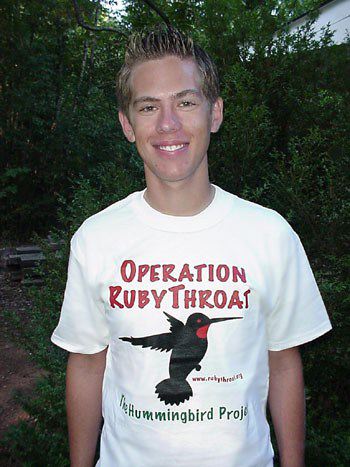
Need a Special Gift just in time for the Holidays? (Or maybe you'd like to make a tax-deductible donation during 2007) If so, why not use our new handy-dandy on-line Google Checkout below to place your secure credit card order or become a Major Donor today? |
|
|
|
|
SPECIES BANDED THIS WEEK: * = New species for 2007 WEEKLY BANDING TOTAL 14 species 126 individuals YEARLY BANDING TOTAL (2007) 65 species 1,718 individuals 26-YEAR BANDING GRAND TOTAL (since 28 June 1982) 124 species 49,801 individuals NOTABLE RECAPTURES THIS WEEK (with original banding date, sex, and current age) Carolina Chickadee (2) American Goldfinch (3) Northern Cardinal (2) Hermit Thrush (1) White-throated Sparrow (4) Carolina Wren (3) Tufted Titmouse (1)
|
OTHER NATURE NOTES OF INTEREST --The 126 birds banded 15-21 Nov gave us the highest weekly total of the year at the Center. American Goldfinches just keep coming.
FOX SPARROW --We don't get many Fox Sparrows (above) at Hilton Pond Center--only 35 banded since 1982--and most winters we're lucky to even see one. Thus, we were elated on 21 Nov to capture THREE of them--all in the same net at 10 a.m. and then at 1:40 and 4:30 p.m. The FOSP is the largest of our true sparrows; its size, gray and brown face, white eye ring, and bright, rusty (fox-colored) back and tail makes it distinctive. --A Hermit Thrush recaptured on 16 Nov was caught at Hilton Pond Center almost exactly five years earlier in exactly the same net. This fifth-year bird is the oldest for its species at the Center; the Bird Banding Laboratory cites nine years three months as the oldest HETH.
|
|
|
|
(Back to Preceding Week; on to Next Week) Up to Top of Page Back to This Week at Hilton Pond Center Current Weather Conditions at Hilton Pond Center |
 You can also post questions for The Piedmont Naturalist |
Join the |
Search Engine for |
|
|
Mens footwear

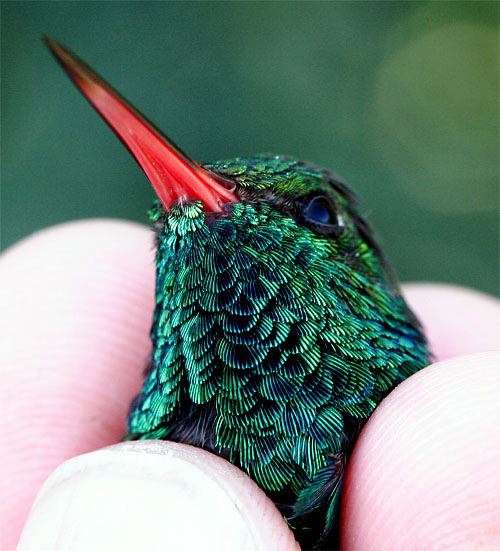 Week One AND Week Two of our annual
Week One AND Week Two of our annual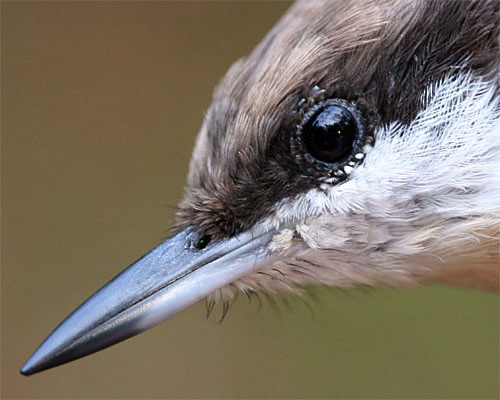
 All are classified in the Sittidae (Nuthatch Family), sitte being a Greek word for "birds that peck on the bark of trees." The common name "nuthatch" comes from the Eurasian Nuthatch's habit of wedging an acorn into a bark crevice and then "hacking" it open with sharp blows from its bill.
All are classified in the Sittidae (Nuthatch Family), sitte being a Greek word for "birds that peck on the bark of trees." The common name "nuthatch" comes from the Eurasian Nuthatch's habit of wedging an acorn into a bark crevice and then "hacking" it open with sharp blows from its bill.


 The cheek is mostly white, although some individuals--especially juveniles--show a faint horizontal line in front of and behind the eye.
The cheek is mostly white, although some individuals--especially juveniles--show a faint horizontal line in front of and behind the eye.
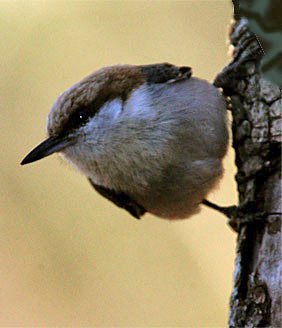 it's known to uncover insects by holding a piece of stiff bark in its bill and using this extension to pry other bark from tree trunks and limbs.
it's known to uncover insects by holding a piece of stiff bark in its bill and using this extension to pry other bark from tree trunks and limbs.
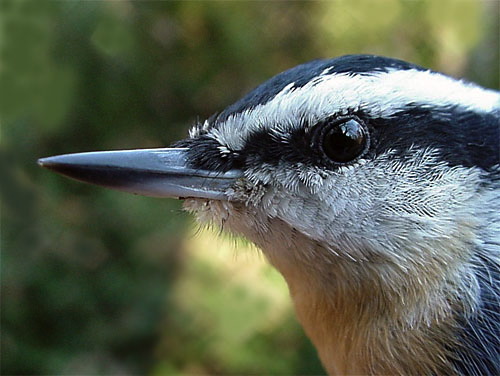
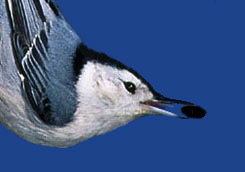 Indeed, most and perhaps all nuthatches are known for this hoarding behavior, which guarantees the nuthatch a food source if feeders come up empty--providing some other species doesn't filch the nuthatch larder first. Such cache-raiding is more likely than not since nuthatches frequently roam the winter woods with "feeding guilds" that include titmice, chickadees, woodpeckers, kinglets, and Pine Warblers. To attract nuthatches, provide a variety of food, especially shelled peanuts, black sunflower, raisins, and suet. With patience, nuthatches can be taught to eat from one's hand.
Indeed, most and perhaps all nuthatches are known for this hoarding behavior, which guarantees the nuthatch a food source if feeders come up empty--providing some other species doesn't filch the nuthatch larder first. Such cache-raiding is more likely than not since nuthatches frequently roam the winter woods with "feeding guilds" that include titmice, chickadees, woodpeckers, kinglets, and Pine Warblers. To attract nuthatches, provide a variety of food, especially shelled peanuts, black sunflower, raisins, and suet. With patience, nuthatches can be taught to eat from one's hand.


 Oct 15 to Mar 15:
Oct 15 to Mar 15: